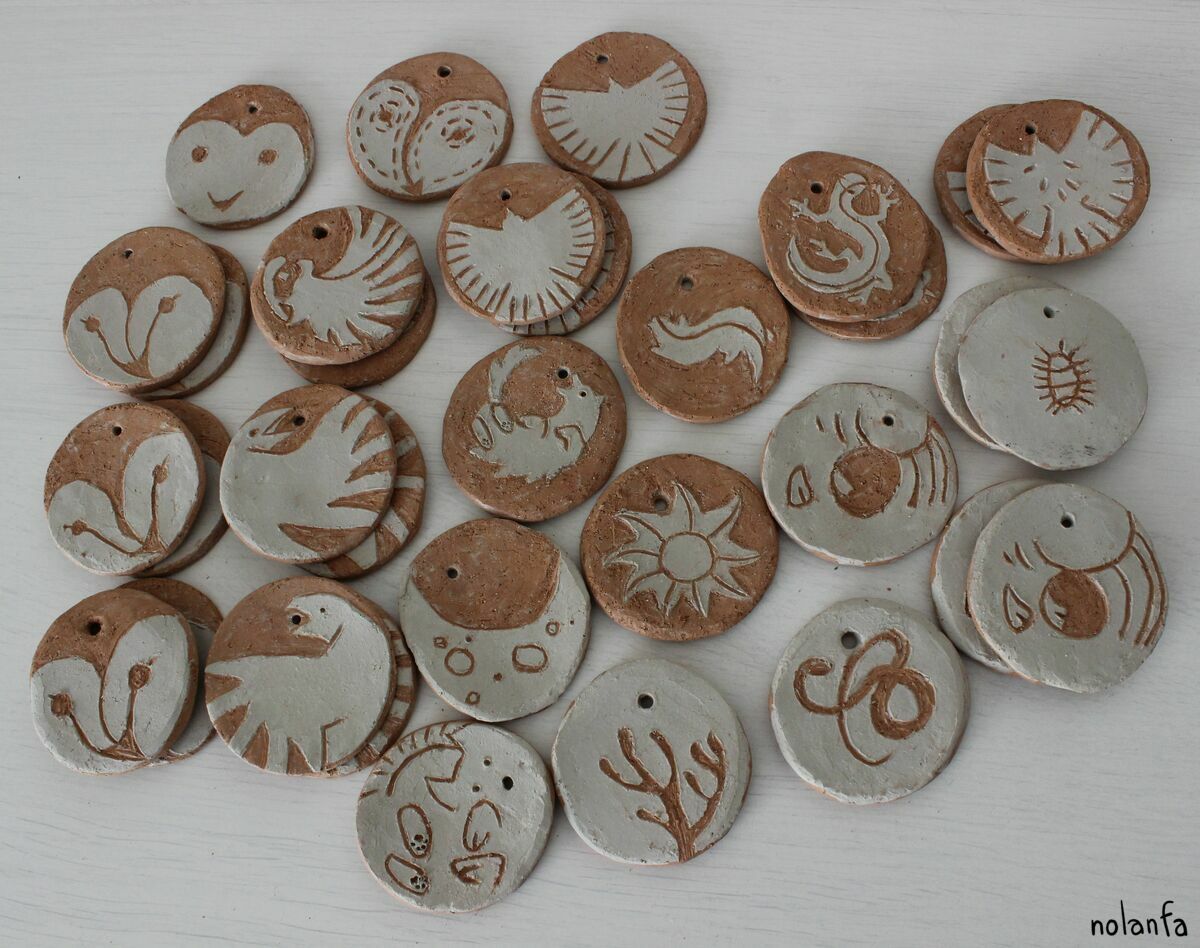Some clay sculptures I made.
Titre auto-référentiel
Noemie Scherer's homepage
stop-motion animator, clay sculptor, puppet-maker,
illustrator, character designer
game designer and unity developer
2024/03/03
2023/12/25
2023/12/08
2021/08/01
Chimerae book
The Chimerae Book Project:
The Chimerae Book will be a 72-pages illustrated book containing illustrations and text, featuring twelve different hybrid animals composed from parts of others.
Here are a couple excerpts:
Slothurtles:
Slothurtles are very slow, long-lived, and big marine animals. They feed entire ecosystems in their fur. Ducts on their shell excrete waste that fertilizes the soil building up on their back, from which grow algae, on which in turn feed fish and other animals. Since there is so much life - food - around them, sea mammals, sharks and bigger fish can often be found close by. When they live near the coast for a while, their ecosystem's composition starts to mimick the ambient one, and they keep it as they swim further away. Their front toes are flat and sharp and can be used to dig up the ground or help anchor themselves down.
They can eat a lot at once, often whale carcasses, and then fast for months. Otherwise, they eat anything - plankton, fish, mammals. They are also thought to somehow be able to metabolize energy from geothermal chimneys.
They lay eggs with very hard shells, one at a time, that they abandon right away; the egg then floats away and can go several times around the world before being ready to hatch. When it is, it bobs to the surface, and finishes its maturation thanks to the sun. It is then usually found by an adult slothurtle - or a small group - that may either ignore it or help it hatch - the reasons behind this choice are unknown. Once hatched, the youth then follows its parent(s) who stay close to the seabed in shallow and bountiful waters for the first few years; they then swim deeper the older they are.
They never stop growing, though it does slow noticeably after a time. There are stories of one, at the bottom of the ocean, kilometers longs (milleniae old), whose symbiotic organisms have changed to deep water corals, deep fishes and invertebrates, who at first fed on the photosynthetic plants and animals who were starving for sunlight but, surprised by the slothurtle's descent, were just as ill-equipped to set out in the middle of the ocean, that far from the coasts and the seabed, than to stay there -but those are stories, just stories.
Monktopi:
Thanks to their eight limbs, monktopi are very agile. They live in big groups, and often bring food back by using all four of their tentacles and their suckers to make a sort of basket on their back- a time during which they're more vulnerable due to their lessened mobility; as a compromise between food and flight, they can use the suckers to individually grab fruits: it carries less, but doesn't hinder movement as much.
Each couple only has one baby at a time. Very little ones cling to their mother's belly; as soon as their suckers are strong enough, they lie on top of the fruit-carrying tentacles-pack and help grab any falling fruit, until they can run by themselves. Baby monktopi have been observed to learn to use their tentacles before they knew how to use their arms, and even adult ones have very fine control: to grab food stuck in a small cavity, for example, they'll favor the use of their tentacles.
But the suckers towards the end of the tentacles tend to have weaker suction than the baser ones, as they get stiffer through constant contact and friction with the branches - except for the last couple rows, that are not as used for weight support and mobility, and stay nimble.
They are very territorial, and though they may occasionally integrate isolated travellers into their group, they can be very violent against members of neighbouring groups who encroach into their territory, sometimes even killing them.
They're exclusively vegetarian, and eat a large variety of the fruit that grows year-long in the tropical forests they dwell in.
Contrary to popular belief, which would have them grow tails with age and be eight-tailed when fully-grown, they are actually tail-less. Two of the tentacles attach just below the shoulder blades, and two in the lower back, but none are in the continuity of the spine.
2021/02/01
2020/04/15
2020/03/11
-
Shadows Two kids argue, one sees monsters in the shadows of their bedroom, the other doesn't believe it. Stop-motion puppet animatio...














































